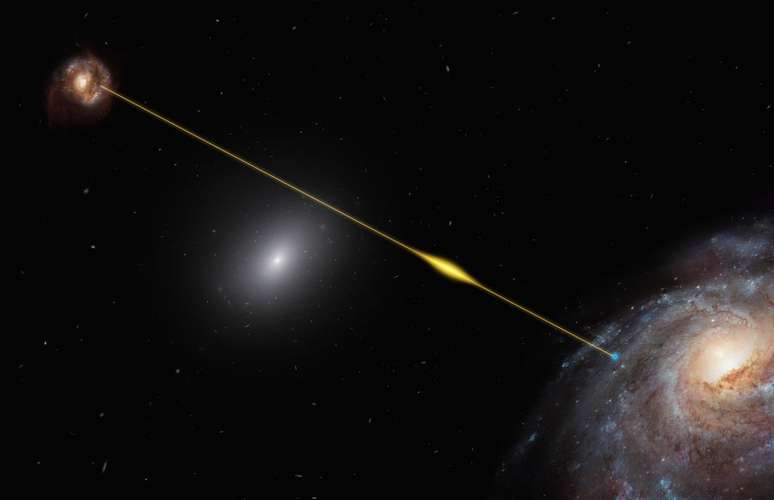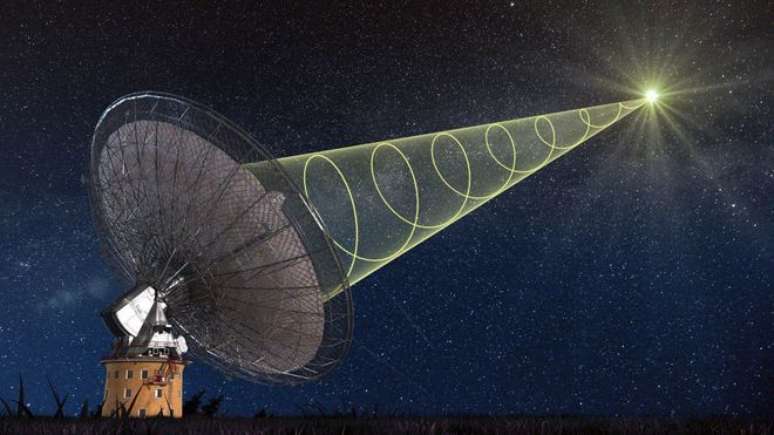ASKAP J1935+2148 behaves in a very particular way and deviates from the pattern identified in other radio signals coming from space
The discovery of a strange radio signal coming from space has kept part of the scientific community awake at night. This is because, unlike other signals already identified by astronomers, ASKAP J1935+2148 behaves in a very peculiar way and completely different from everything researchers know about this type of phenomena in the cosmos.
The unknowns surrounding this mystery were published in Nature Astronomy, one of the world’s leading scientific journals, and highlight how the signal is unlike anything ever recorded by science.
You Radio signals from space are nothing new nor do they represent any type of extraterrestrial communication. So-called transient radio signals are signals identified by astronomers using radio telescopes which capture these waves coming from different points of the universe, possibly originating from neutron stars.
These stars have a very specific type of rotation, they rotate at high speed and emit these radio waves. And, because of this, there is a certain pattern to this behavior, a regular frequency that scientists can identify from Earth. But ASKAP J1935+2148 doesn’t behave like that.

While most transient radio signals have very short and rapid cycles, observations of J1935+2148 last almost an hour. This in itself would be a very curious factor, given that it is the largest cycle ever identified by astronomy so far, but the signal still presents other peculiarities.
The main one is that his behavior is very erratic. As stated, transient radio signals have a very clear and predictable frequency. However, ASKAP J1935+2148 sometimes has long and bright flashes, sometimes fast and weak. Not to mention the times when radio telescopes are unable to capture anything coming from their location.
All this means that researchers simply can’t explain what’s going on. Writing in Nature Astronomy, Australian astronomers from the Commonwealth Scientific and Industrial Research Organization (CSIRO) report that they identified the signal while monitoring a gamma-ray source when they came across something different in the data.
The three faces of the sign
According to them, the signal aroused everyone’s curiosity because it is a type of circularly polarized radio wave, that is, it travels in space in a spiral pattern, like a corkscrew. From that point on, scientists began to observe it more closely and noticed how different it was from everything they knew before.
In addition to having a much longer cycle than other transient radio signals, at 53.8 minutes, ASKAP J1935+2148 behaves in three very different ways identified during the analysis period.

The circularly polarized pulse was just one of them. Lasting just 370 milliseconds, it was very dim compared to the second identified state, in which the pulses were much brighter and linearly polarized. In these cases, they lasted from 10 to 50 seconds. Other times, however, there was no heartbeat at all, going into a silent or even off mode.
As mentioned above, astronomers have no direct explanation for these phenomena, although they point to some possibilities. One of these would be that the complex magnetic fields and plasma flows coming from the source of the signals would interact with nearby magnetic fields, creating these distortions.
The main hypothesis points to a neutron star that rotates slowly, as opposed to those that rotate in fractions of a second. However, scientists point out in the study that there is a possibility that it could be a white dwarf, i.e. a type of sun that burned out after its nuclear fuel ran out. They would have a slow rotation that would fit the hypothesis, but there is no explanation as to how it would produce these mysterious radio waves.
What does all this mean?
The search for answers to what the hell is happening with ASKAP J1935+2148 could change astronomy’s understanding of the behavior of some celestial bodies and phenomena. As the Australian researchers point out, identifying what emits the radio signal could push science to revise its knowledge of neutron stars or white dwarfs.
As mentioned, the identified signal does not behave regularly or with one or the other possibility, understanding its nature can provide further explanations on how these radio waves emit.
Trends on Canaltech:
- 8 AI to create animations
- New spear-shaped spider discovered in Australia
- The 50 funniest Google Assistant jokes
- The 20 best horror films of the new generation
- Call of Duty Black Ops 6 will arrive in October and will receive the campaign trailer
- Samsung “accidentally” leaks Galaxy Watch FE to promote Galaxy S24
Source: Terra
Rose James is a Gossipify movie and series reviewer known for her in-depth analysis and unique perspective on the latest releases. With a background in film studies, she provides engaging and informative reviews, and keeps readers up to date with industry trends and emerging talents.






